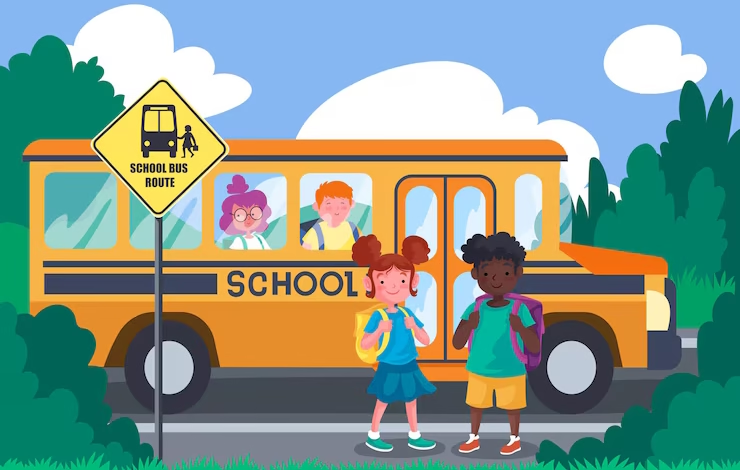Border patrol halts school bus questions students in new mexico

Border Patrol Stops School Bus: What Happened in New Mexico?
On a chilly February morning in 2025, a group of high school students from Las Cruces, New Mexico, set out on a charter bus, excited for a swim meet in Albuquerque. The mood was light, with teens chatting and coaches preparing for the competition. But their journey took an unexpected turn at a U.S. Border Patrol checkpoint on Interstate 25. What started as a routine stop escalated into an unsettling encounter that left students shaken, parents outraged, and a community questioning the balance between border security and personal freedom. This incident, widely reported but often misunderstood, shines a spotlight on the complex realities of life near the U.S.-Mexico border.
As someone who grew up in a border state, I’ve passed through checkpoints countless times. The familiar sight of green-and-white Border Patrol vehicles and agents waving cars through is part of the landscape in places like New Mexico. But when I heard about this incident, it hit differently. It wasn’t just about a routine check—it was about kids, some as young as 14, being questioned about their immigration status while heading to a school event. It felt personal, like a violation of the safe space school activities are supposed to provide. So, let’s unpack what happened, why it sparked such controversy, and what it means for students, parents, and communities in border regions.
What Happened at the Checkpoint?
The incident occurred on February 21, 2025, when a charter bus carrying students from Las Cruces High School, Centennial High School, and Mayfield High School was stopped at a Border Patrol checkpoint north of Las Cruces. The bus, which lacked school markings, was en route to a state swim competition. According to reports, the trouble began when agents questioned the bus driver, who didn’t speak English fluently. Unable to communicate effectively, the situation escalated. Instead of de-escalating, an agent boarded the bus, reportedly ignoring the coaches’ attempts to explain that the passengers were students on a school trip. The agent began questioning the students directly, asking for proof of their legal status in the U.S.
Imagine being a teenager, maybe nervous about an upcoming race, suddenly facing a federal agent demanding documentation. For many of these kids, it was their first encounter with law enforcement in such a direct, intimidating way. Parents like Kelly Campion, whose son was on the bus, described the experience as “insane,” emphasizing that demanding documentation from minors on their way to a school event crossed a line. The students, rattled and shaken, were eventually allowed to continue their journey after agents confirmed everyone was legally present. But the emotional impact lingered.
U.S. Customs and Border Protection (CBP) defended the agents’ actions, stating that the bus was treated as a standard charter vehicle due to its lack of school decals. In their view, this was a routine immigration inspection, part of their mission to secure the border and deter illegal immigration. Checkpoints like the one on Interstate 25 are common in the El Paso Sector, where agents are tasked with verifying the legal status of passengers on vehicles passing through. CBP emphasized that such inspections are minimally intrusive and critical to national security, especially in areas within 100 miles of the border, where they have broad authority to conduct searches without a warrant.
The Community’s Response
The incident sparked immediate outrage. U.S. Representative Gabe Vasquez, a Democrat representing southern New Mexico, called the agents’ actions “harassment” and demanded answers from the Department of Homeland Security (DHS). “Harassing and frightening children does not make New Mexico safer,” Vasquez said during a press conference. He argued that no student should fear law enforcement while traveling to a school event, especially in a state where bilingualism is legally recognized, and many residents speak Spanish as their primary language.
Local educators echoed Vasquez’s concerns. Whitney Holland, president of the American Federation of Teachers New Mexico, condemned the incident, stating that students shouldn’t live in fear while participating in extracurricular activities. Julie Wojtko, president of the National Education Association-Las Cruces, highlighted the broader implications: “This behavior was traumatizing to our students and educators and cannot continue.” She pointed out that checkpoints could disrupt travel for students across southern New Mexico, where schools regularly send teams to competitions in cities like Albuquerque, Hobbs, and Farmington.
Las Cruces Public Schools, while acknowledging that everyone on the bus complied and was allowed to proceed, expressed hope that this was an isolated event. Superintendent Ignacio Ruiz met with CBP officials to discuss preventive measures, such as equipping charter buses with magnetic decals to clearly identify them as school vehicles. But for many in the community, the incident raised deeper questions about fairness, racial profiling, and the treatment of Hispanic and bilingual residents in a region where over half the population is Latino.
On the other side, some defended the Border Patrol’s actions. The Republican Party of New Mexico criticized Vasquez’s rhetoric as “reckless” and argued that it undermined trust in law enforcement. They pointed out that human trafficking is a serious issue, and an unmarked bus with a driver who couldn’t communicate in English could reasonably raise suspicions. CBP’s spokesperson reiterated that agents were simply doing their job, ensuring compliance with immigration laws in a region where smuggling is a concern.
Life in the 100-Mile Border Zone
To understand this incident, we need to talk about the “100-mile border zone.” Under federal law, CBP has the authority to conduct warrantless searches and immigration checks within 100 miles of any U.S. border, including the entire coastline. This zone covers much of New Mexico, including Las Cruces, which is about 40 miles from the U.S.-Mexico border. Within this area, agents can board vehicles, including buses, and question passengers about their immigration status. The American Civil Liberties Union (ACLU) notes that while these stops are supposed to be brief and related to immigration enforcement, they can feel intrusive, especially when agents question minors or extend stops unnecessarily.
Living in a border state, I’ve seen how these checkpoints blend into daily life. They’re as routine as a traffic light for those of us who drive these roads regularly. But there’s a difference between waving a car through and boarding a bus full of kids. The Las Cruces incident wasn’t just about protocol—it was about perception and trust. For students, many of whom come from mixed-citizenship families or speak Spanish at home, the experience felt like an accusation. For parents, it was a wake-up call about how far border enforcement can reach into everyday activities.
Why This Incident Matters
This wasn’t an isolated event in the broader context of border enforcement. Similar incidents have been reported, including ICE questioning Native American tribal members and Spanish-speaking U.S. citizens in New Mexico. Vasquez referenced these cases, warning that such actions could lead to racial profiling in majority-Hispanic communities. The fear is that under the current administration, which has expanded enforcement powers for agencies like ICE, these encounters could become more common.
The incident also highlights the unique challenges of border communities. New Mexico is a bilingual state by law, and many residents, including U.S. citizens, primarily speak Spanish. The fact that the bus driver’s limited English triggered the escalation raises questions about cultural sensitivity. Should agents, especially in a region where Spanish is widely spoken, be better equipped to communicate in both languages? As someone who’s navigated these checkpoints, I’ve seen agents switch seamlessly between English and Spanish. But when language barriers lead to heightened scrutiny, it can feel like a penalty for being part of a bilingual community.
For students, the impact goes beyond the moment. Extracurricular activities like swim meets are more than just competitions—they’re opportunities for growth, teamwork, and building confidence. When a routine trip turns into a confrontation with federal agents, it risks undermining the sense of safety and normalcy that schools strive to provide. The U.S. Supreme Court’s 1982 ruling in Plyler v. Doe guarantees all students, regardless of immigration status, the right to a free public education. Incidents like this one challenge that principle, creating fear that could discourage participation in school activities.
What Can Be Done?
The Las Cruces incident has sparked calls for change. Vasquez and local educators are pushing for clearer guidelines on how Border Patrol should handle school buses and minors. Suggestions include:
-
Clear Markings on Buses: Las Cruces Public Schools is working with charter companies to add visible decals and signs to buses carrying students. This could prevent similar misunderstandings in the future.
-
Training for Agents: Advocates argue that agents need better training on interacting with minors and de-escalating situations involving school groups. Sensitivity to the cultural and linguistic diversity of border communities is critical.
-
Policy Review: Vasquez’s letter to DHS calls for a full investigation and a clear policy on how agents should approach sensitive locations like schools. This could include stricter protocols for questioning minors or entering vehicles with children.
-
Community Engagement: Schools and CBP could collaborate to educate families about checkpoint procedures, reducing fear and confusion. Open communication might help build trust between border communities and law enforcement.
From my perspective, growing up near the border taught me that security and community coexist uneasily. Checkpoints are a fact of life, but they shouldn’t feel like a trap for kids on their way to a swim meet. There’s a way to balance enforcement with respect for the people who call these regions home. It starts with listening—to students, parents, and educators—and recognizing that border security shouldn’t come at the cost of a child’s sense of safety.
The Bigger Picture
This incident is a microcosm of the broader tensions surrounding immigration enforcement in the U.S. Under the current administration, policies have shifted toward stricter border control, including expanded powers for ICE and CBP. While these measures aim to address illegal immigration and trafficking, they can have unintended consequences, like instilling fear in communities where many residents are U.S. citizens or legal residents. The Las Cruces case isn’t just about one bus—it’s about how far enforcement can go before it feels like overreach.
For border communities, this is a lived reality. Families navigate checkpoints daily, and students cross borders for school, as seen in places like Deming, where Mexican-American students from Palomas, Mexico, attend U.S. schools. These arrangements are legal and longstanding, but they exist in a delicate balance. When incidents like the Las Cruces bus stop occur, they disrupt that balance, raising questions about fairness, trust, and the future of border enforcement.
Moving Forward
As the Las Cruces community processes this event, the focus is on prevention. Schools are taking steps to ensure buses are clearly marked, and educators are advocating for policies that protect students. CBP, for its part, insists that agents followed protocol and that no one was detained or removed from the bus. But the emotional toll on the students can’t be ignored. For kids like Kelly Campion’s son, the memory of being questioned by a federal agent will linger longer than the swim meet itself.
My own experiences at checkpoints have been uneventful, but I can’t shake the image of those students, caught off guard and scared. It reminds me of why trust matters—between communities, schools, and law enforcement. Border security is essential, but so is ensuring that kids can go to a swim meet without feeling like suspects. As New Mexico grapples with this incident, the hope is that dialogue and action will prevent it from happening again.



